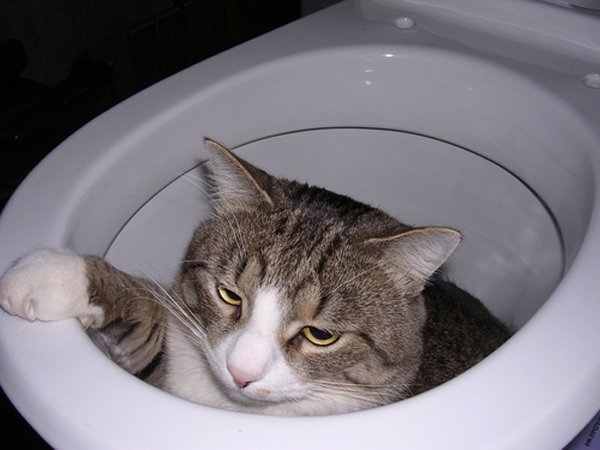Potential Risks of Flushing Cat Poop Down Your Toilet - Tips for Safer Handling
Potential Risks of Flushing Cat Poop Down Your Toilet - Tips for Safer Handling
Blog Article
We have encountered this great article involving How to Dispose of Cat Poop and Litter Without Plastic Bags listed below on the internet and believe it made good sense to talk about it with you in this article.

Introduction
As pet cat proprietors, it's essential to be mindful of exactly how we dispose of our feline good friends' waste. While it might appear hassle-free to purge cat poop down the toilet, this technique can have harmful consequences for both the setting and human health.
Environmental Impact
Flushing feline poop introduces harmful microorganisms and parasites right into the water system, positioning a substantial danger to marine communities. These pollutants can negatively affect aquatic life and concession water top quality.
Health Risks
Along with ecological concerns, purging feline waste can additionally present wellness risks to human beings. Feline feces might contain Toxoplasma gondii, a parasite that can cause toxoplasmosis-- a possibly severe ailment, especially for pregnant women and people with damaged immune systems.
Alternatives to Flushing
Fortunately, there are much safer and a lot more liable methods to deal with pet cat poop. Consider the adhering to choices:
1. Scoop and Dispose in Trash
One of the most typical method of throwing away cat poop is to scoop it into an eco-friendly bag and throw it in the garbage. Make sure to use a dedicated trash scoop and dispose of the waste promptly.
2. Usage Biodegradable Litter
Choose eco-friendly feline litter made from materials such as corn or wheat. These trashes are eco-friendly and can be safely taken care of in the trash.
3. Hide in the Yard
If you have a lawn, take into consideration hiding cat waste in a marked location away from veggie gardens and water resources. Make sure to dig deep enough to stop contamination of groundwater.
4. Install a Pet Waste Disposal System
Invest in a pet dog garbage disposal system particularly designed for pet cat waste. These systems use enzymes to break down the waste, lowering smell and ecological impact.
Conclusion
Accountable pet ownership extends beyond offering food and shelter-- it also includes correct waste administration. By avoiding flushing pet cat poop down the bathroom and choosing alternative disposal techniques, we can reduce our ecological footprint and secure human wellness.
Why Can’t I Flush Cat Poop?
It Spreads a Parasite
Cats are frequently infected with a parasite called toxoplasma gondii. The parasite causes an infection called toxoplasmosis. It is usually harmless to cats. The parasite only uses cat poop as a host for its eggs. Otherwise, the cat’s immune system usually keeps the infection at low enough levels to maintain its own health. But it does not stop the develop of eggs. These eggs are tiny and surprisingly tough. They may survive for a year before they begin to grow. But that’s the problem.
Our wastewater system is not designed to deal with toxoplasmosis eggs. Instead, most eggs will flush from your toilet into sewers and wastewater management plants. After the sewage is treated for many other harmful things in it, it is typically released into local rivers, lakes, or oceans. Here, the toxoplasmosis eggs can find new hosts, including starfish, crabs, otters, and many other wildlife. For many, this is a significant risk to their health. Toxoplasmosis can also end up infecting water sources that are important for agriculture, which means our deer, pigs, and sheep can get infected too.
Is There Risk to Humans?
There can be a risk to human life from flushing cat poop down the toilet. If you do so, the parasites from your cat’s poop can end up in shellfish, game animals, or livestock. If this meat is then served raw or undercooked, the people who eat it can get sick.
In fact, according to the CDC, 40 million people in the United States are infected with toxoplasma gondii. They get it from exposure to infected seafood, or from some kind of cat poop contamination, like drinking from a stream that is contaminated or touching anything that has come into contact with cat poop. That includes just cleaning a cat litter box.
Most people who get infected with these parasites will not develop any symptoms. However, for pregnant women or for those with compromised immune systems, the parasite can cause severe health problems.
How to Handle Cat Poop
The best way to handle cat poop is actually to clean the box more often. The eggs that the parasite sheds will not become active until one to five days after the cat poops. That means that if you clean daily, you’re much less likely to come into direct contact with infectious eggs.
That said, always dispose of cat poop in the garbage and not down the toilet. Wash your hands before and after you clean the litter box, and bring the bag of poop right outside to your garbage bins.
https://trenchlesssolutionsusa.com/why-cant-i-flush-cat-poop/

I came across that review on How to Dispose of Cat Poop and Litter Without Plastic Bags when perusing the web. Feel free to take the time to distribute this post if you appreciated it. We love reading our article about How to Dispose of Cat Poop and Litter Without Plastic Bags.
Schedule Your Job Now Report this page